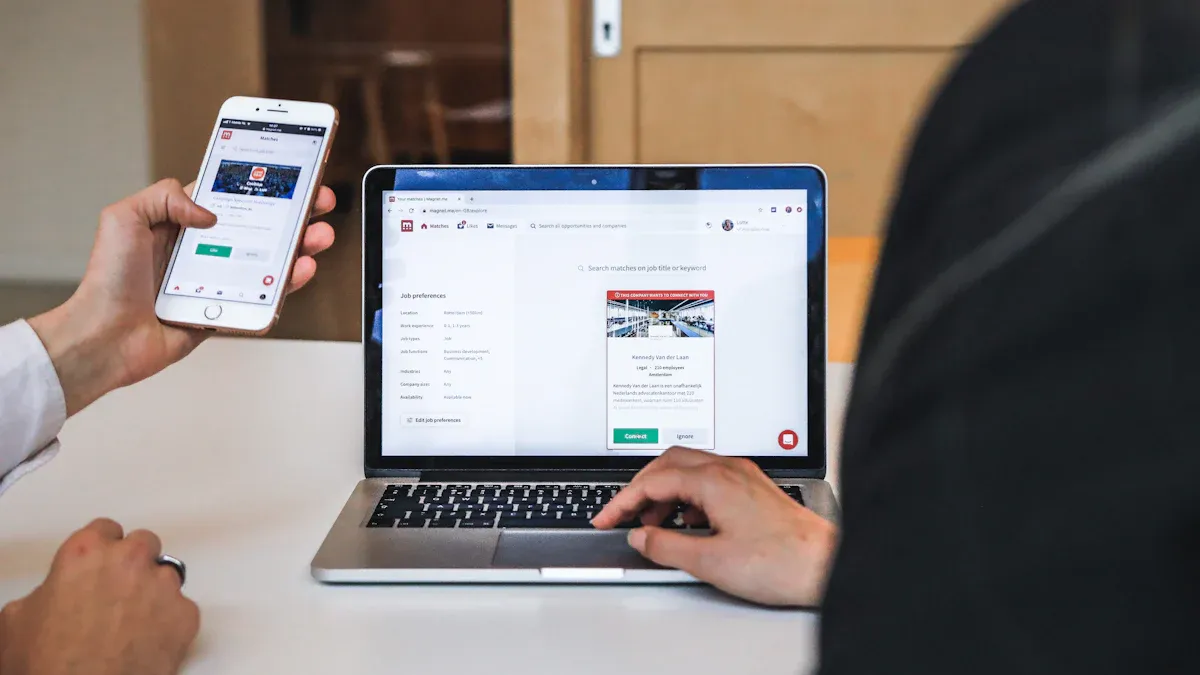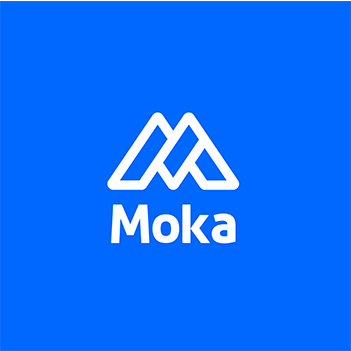How Small Businesses Can Select the Best Applicant Tracking Systems in 2025

Hiring good workers can be hard for small businesses. That’s why applicant tracking software companies provide solutions that help streamline the hiring process. About 35% of small businesses use an ATS to hire faster and find better workers. Many applicant tracking software companies offer tools that are now cheaper, making hiring easier. This lets you spend more time growing your business.
Key Takeaways
An applicant tracking system (ATS) helps small businesses save time and money. It reduces hiring time by 20% and saves around $10,000 each year.
Pick an ATS that matches your hiring needs and budget. Think about your team size, how many people you hire, and any extra costs.
Find an ATS that is easy to use. Look for features like automation and mobile access to make hiring better for your team and job seekers.
What Is an Applicant Tracking System and Why Is It Important?
What does an applicant tracking system do?
An applicant tracking system (ATS) is a tool for hiring. It works like a helper that keeps all job applications in one spot. It handles tasks like sorting resumes and saving candidate details. This means you don’t have to spend hours looking through resumes. Instead, you can focus on talking to the best candidates. The main purpose of an ATS is to make hiring faster and easier for businesses.
Why small businesses should use an ATS
An ATS saves both time and money for small businesses. Recruiters say it cuts hiring time by 20%. Small businesses can save about $10,000 each year by using one. It also helps find better workers quickly. Around 78% of recruiters say it improves hiring quality. Plus, 86% say it makes hiring faster. For small businesses, these benefits help them stay ahead of others.
How an ATS solves hiring problems
Hiring can be tough when you have many tasks to do. An ATS fixes issues like few applications or long job postings. For example, BoyleSports used an ATS to hire 50% more directly and rely less on agencies. BestDrive saved 90% on hiring costs and cut hiring time from a month to a week. These tools are great for small businesses wanting to grow easily.
Knowing What Your Business Needs Before Picking an ATS
Thinking about hiring numbers and team size
Before picking an ATS, think about how many people you need to hire. If you only need a few workers, a simple system is fine. But if you get lots of applications, you’ll need a better tool. Some ATS tools show data to help you see hiring patterns. This can show where you waste time or miss good candidates. By knowing your hiring needs, you can choose a system that works well without paying for extras you don’t need.
Planning a budget for ATS tools
Budgeting is important when choosing an ATS. Small businesses usually spend $15 to a few thousand dollars monthly. Some systems are free, which is good for starting out. Here’s a simple look at pricing types:
Pricing Type | Cost Range |
|---|---|
Per Job | $100 to $500 per job |
Per Recruiter | $60 to $100 monthly per user |
Per Employee | $4 to $7 per worker |
Flat Fee | $350 monthly or one-time fee |
Knowing these costs helps you avoid spending too much. Always check for extra fees like setup or support charges.
Setting hiring goals and fixing problems
What’s the hardest part of hiring for you? Maybe it’s finding good workers or spending too long on resumes. An ATS can help with these problems. Many systems let you post jobs on several websites easily. They also give data to make hiring faster and better. By knowing your hiring problems, you can pick features that solve them. This way, the ATS matches your goals and makes hiring simpler.
Features to Look for in Applicant Tracking Software

Easy to use and simple design
Pick an ATS that’s simple to understand and use. A clear design helps your team learn it fast without long training. Did you know 60% of people quit applications due to confusing systems? A simple system keeps candidates interested and happy. Candidates with an easy application process are 50% more likely to accept jobs. A user-friendly ATS makes hiring better for everyone.
Works well with your current tools
Your ATS should connect to tools you already use. It should link with payroll, e-signature apps, or email platforms. This saves time and avoids mistakes. For example, BoyleSports and BestDrive made hiring faster by connecting ATS to their systems. They also saved money and improved hiring speed. A flexible ATS that fits with your tools makes recruiting easier.
Helps with data and decisions
Data helps you hire smarter. New ATS tools show reports to track hiring and improve plans. For example, they can show where candidates stop applying or which job sites work best. This helps you make better choices and improve hiring. Research shows companies using data-driven ATS features hire better and faster.
Feature | Benefit |
|---|---|
Advanced Analytics | Tracks hiring progress and finds problems. |
Reporting Tools | Gives tips to improve hiring and track candidates. |
Data-Driven Decisions | Makes hiring plans better for great results. |
Automation for a better experience
Automation makes hiring easier by doing boring tasks for you. It can send emails or set up interviews, saving you time. Candidates like updates and personal messages about their applications. About 83% of job seekers feel valued with regular updates. Companies like L'Oréal and Unilever use automation to make applicants happier. Automating tasks improves the hiring process for everyone.
How to Evaluate Applicant Tracking Software Companies
Comparing pricing models and avoiding hidden costs
It’s important to understand ATS pricing options. Some charge per job, recruiter, or a flat fee. For example, pay-per-job costs $100 to $500 for each position. Pay-per-recruiter costs $60 to $100 monthly per user. Flat fees might start at $350 monthly or as a one-time cost. Choose the model that fits your hiring needs and budget.
Be careful of extra charges. Some companies add fees for setup, training, or support. These hidden costs can add up fast. Always ask for a full list of charges. This helps you avoid surprises and stick to your budget.
Assessing customer support and training resources
Good customer support makes using an ATS easier. Look for companies with 24/7 help or account managers. Training tools like tutorials or webinars are also helpful. These resources teach your team how to use the system quickly.
Check reviews or ask for references before deciding. Learn how fast the company fixes problems. A vendor with strong support keeps your hiring process smooth, even during issues.
Ensuring scalability for future business growth
Your business may grow, so pick an ATS that grows too. Scalable systems let you add users or features as needed. This saves you from switching systems later.
The ATS market is growing fast. It’s expected to rise from $2.5 billion in 2022 to $3.8 billion by 2030. Cloud-based and SaaS systems are leading this growth. These options are great for small businesses because they’re flexible and easy to use. Choosing a scalable ATS ensures your hiring process works well as you expand.
Trends in Applicant Tracking Systems for 2025

AI-driven recruitment tools for efficiency
AI is changing how hiring works. New ATS tools use AI to check resumes, match people to jobs, and guess hiring success. This helps you spend time talking to top candidates instead of sorting applications. AI also makes hiring 30% faster, says Gartner. McKinsey found AI improves worker quality by 25% and cuts hiring costs by 50%.
Source | How Efficiency Improves | Percentage Gain |
|---|---|---|
Gartner | Faster hiring with AI tools | 30% |
McKinsey | Better workers found using AI-powered ATS | 25% |
McKinsey | Lower costs with AI and smart systems | 50% |
McKinsey | Fewer people leaving jobs with AI matching them to roles | 40% |
AI makes hiring smarter and quicker. It helps find great workers while saving time and money.
Automation for repetitive hiring tasks
Automation helps with boring hiring tasks. ATS automation can set up interviews, send emails, and track applications for you. This saves time and ensures no one is missed. Did you know 70% of hiring managers say automation makes work easier? Also, 86% of recruiters hire faster with ATS automation.
Statistic | What Automation Improves |
|---|---|
68% | Companies hire faster and work better with ATS automation. |
70% | Managers get more done with automated hiring tasks. |
86% | Recruiters shorten hiring time using ATS automation. |
By automating tasks, you can focus on meeting candidates and making smart choices.
Mobile-friendly ATS for flexible hiring processes
In 2025, mobile-friendly ATS tools are very important. Many people use phones, so hiring must work well on mobile devices. Mobile-friendly systems let you post jobs, check applications, and talk to candidates anytime. Research shows candidates like easy applications and accept jobs more often. These systems also help you manage hiring anywhere, keeping you productive on the go.
Tip: A mobile-friendly ATS makes hiring easier and gives candidates a better experience. This helps your company attract top workers.
Mobile technology ensures ATS tools stay easy and useful for everyone.
Picking the right applicant tracking system (ATS) can change hiring. It saves time, cuts costs, and finds great workers faster. To succeed, match ATS features to your needs and budget. Look into trends like AI and automation to stay ahead.
Here’s what you can do:
Create a list of candidates to hire quicker.
Use trusted reviews to compare ATS pros and cons.
Ask real users for feedback about their experiences.
Steps to Take | What to Do |
|---|---|
Contact 3–5 vendors | Check companies yourself and prepare demo questions. |
Use trusted reviews | Find honest details on ATS strengths and weaknesses. |
Real user feedback matters | Learn from users about their satisfaction and choices. |
By doing these steps, you’ll find an ATS that fits your needs. Start by checking your goals, researching companies, and trying demos today!
FAQ
What is the best way to test an ATS before buying?
Ask for a free trial or demo. Use it to post jobs, track applicants, and explore features. This helps you see if it fits your needs.
Tip: Prepare a checklist of must-have features to evaluate during the trial.
Can small businesses afford an ATS?
Yes! Many ATS options are budget-friendly. Some even offer free plans for small teams. Look for pricing models that match your hiring volume and budget.
How do I know if an ATS is user-friendly?
Check reviews or ask for a demo. Look for simple navigation, clear instructions, and minimal training requirements. A user-friendly ATS saves time and reduces frustration.
Note: Involve your team in testing to ensure everyone finds it easy to use.
See Also
Top 5 Tips for Choosing the Best Applicant Tracking System
Essential Factors to Consider When Selecting an ATS
Understanding Business Requirements Through Applicant Tracking Systems
From recruiting candidates to onboarding new team members, MokaHR gives your company everything you need to be great at hiring.
Subscribe for more information

